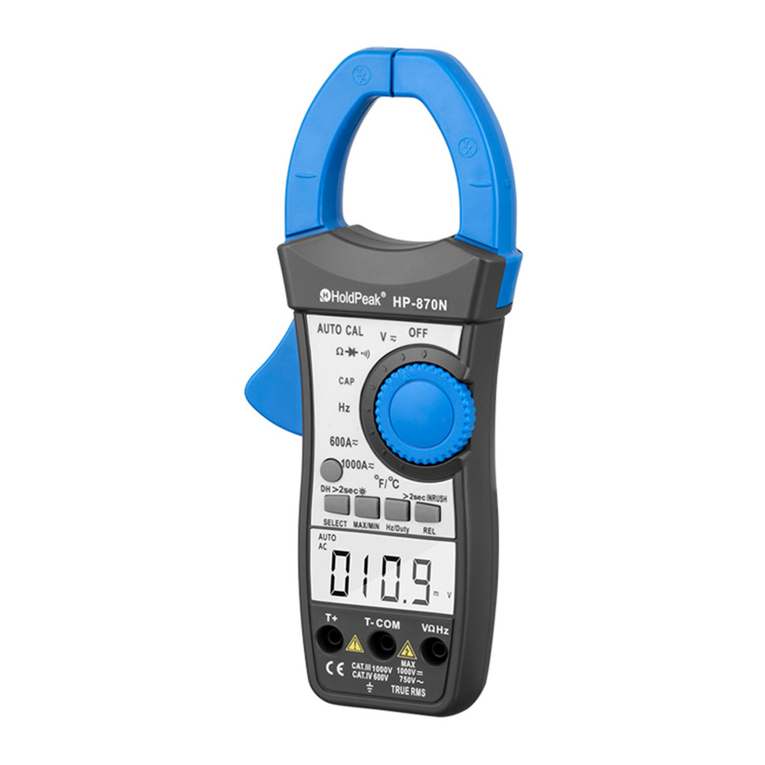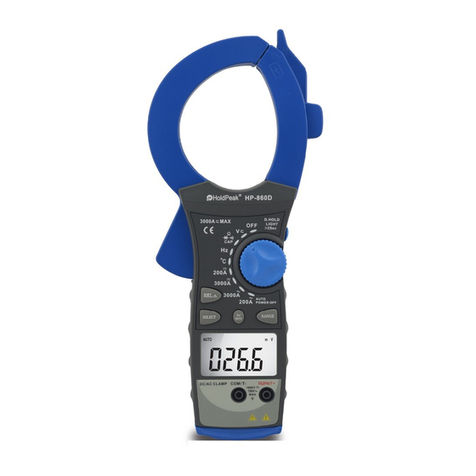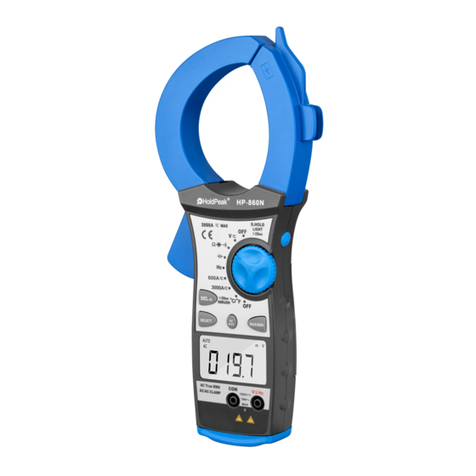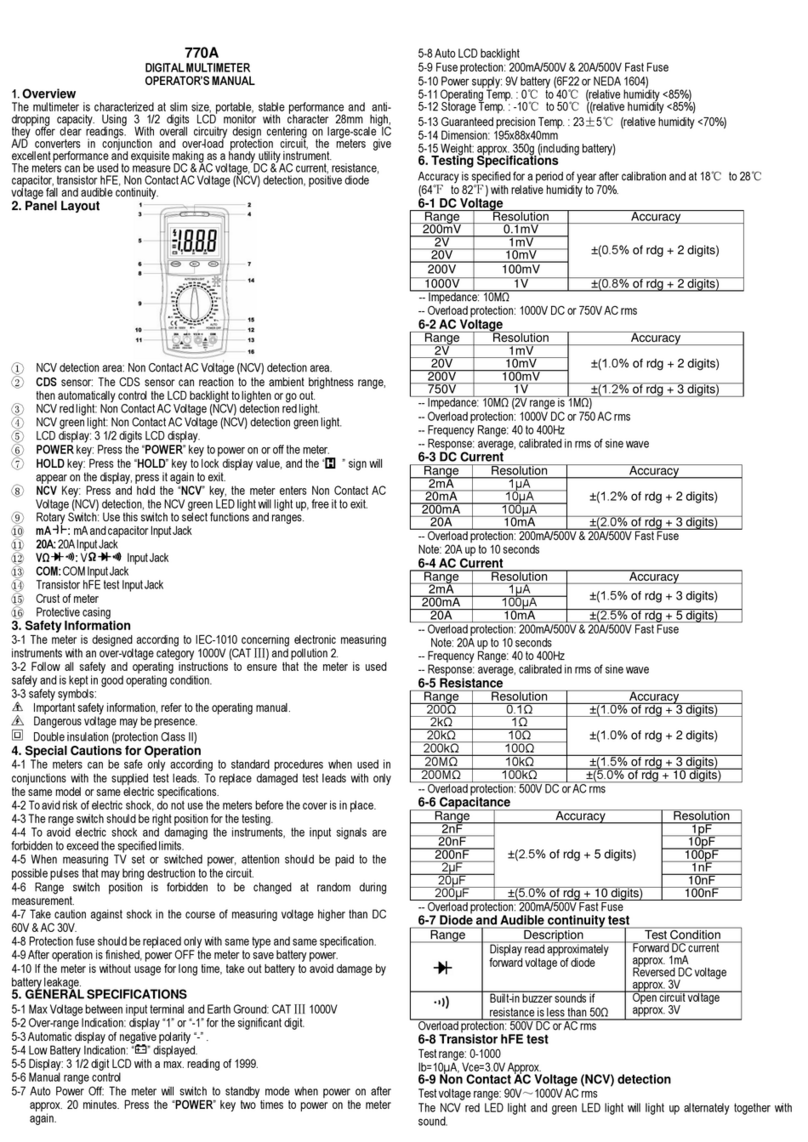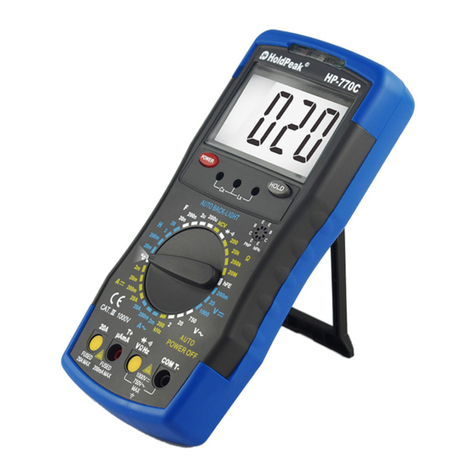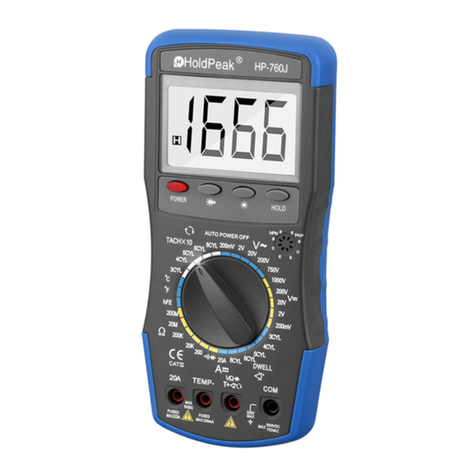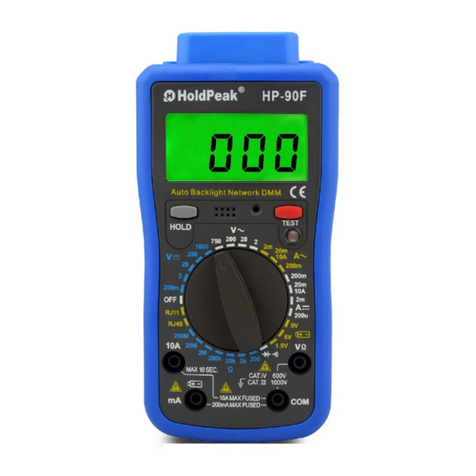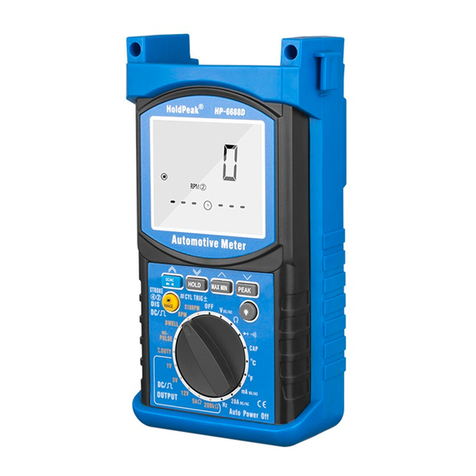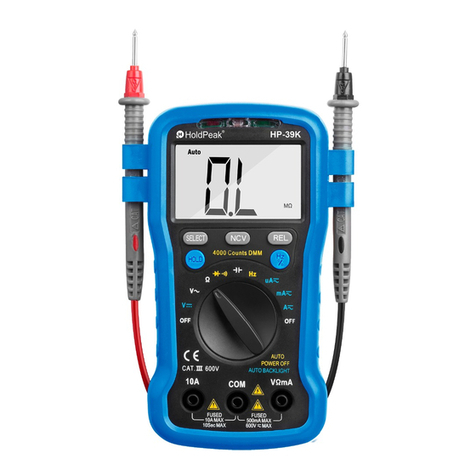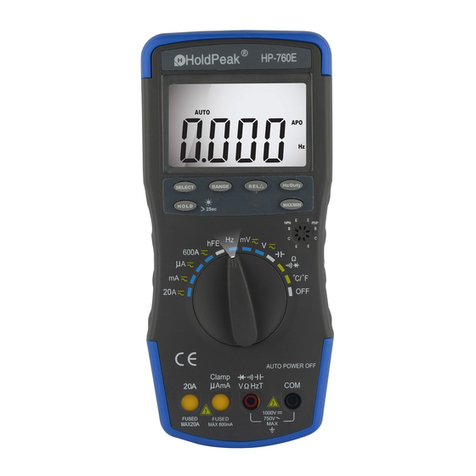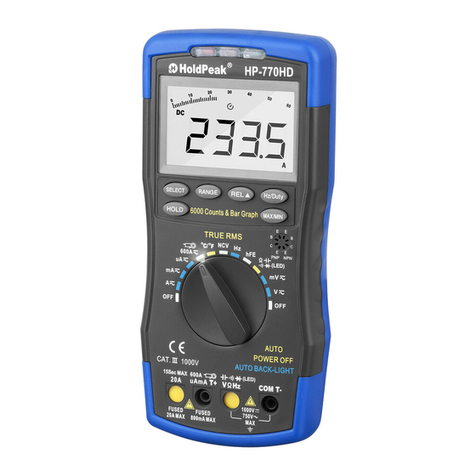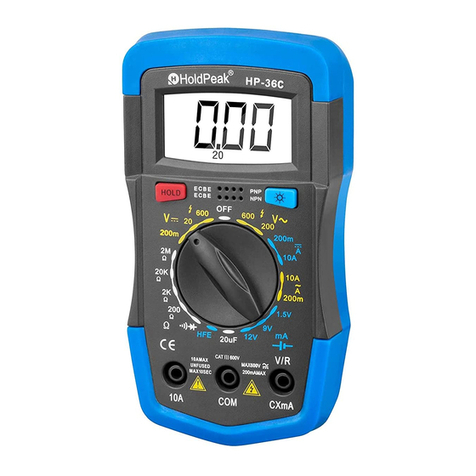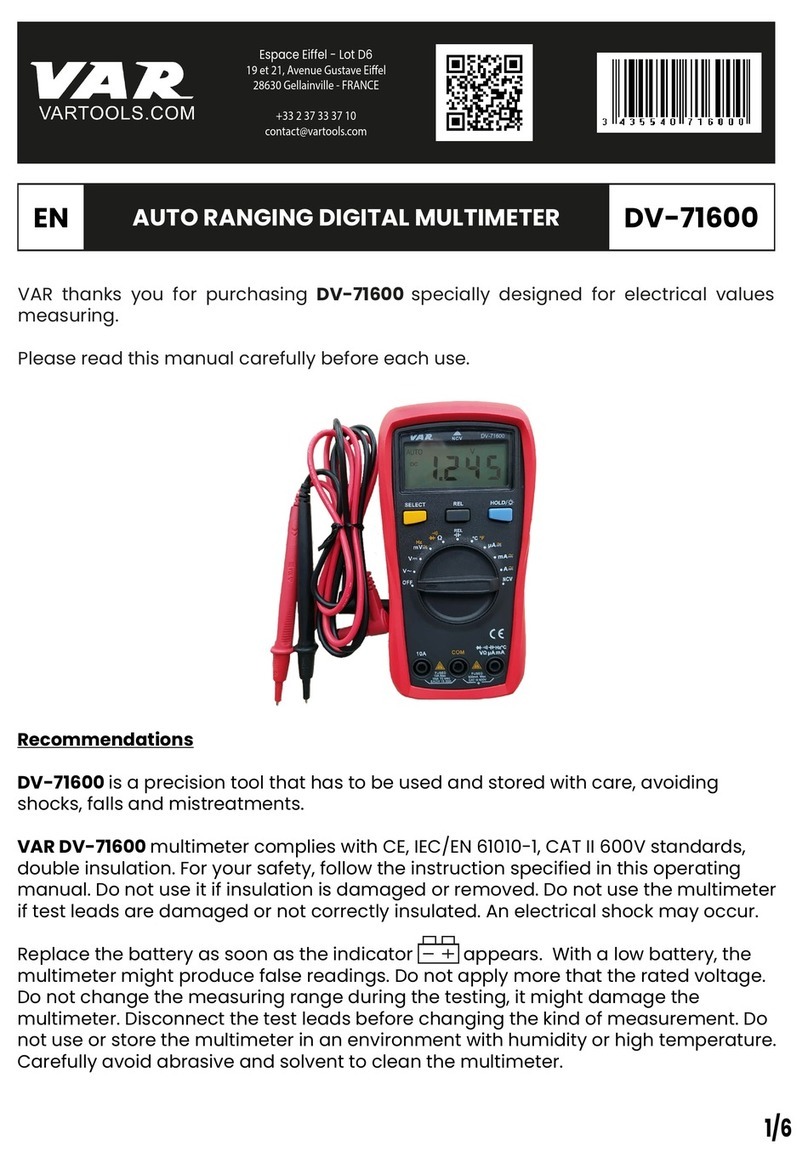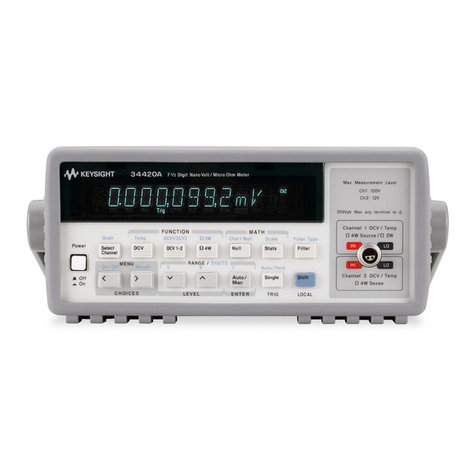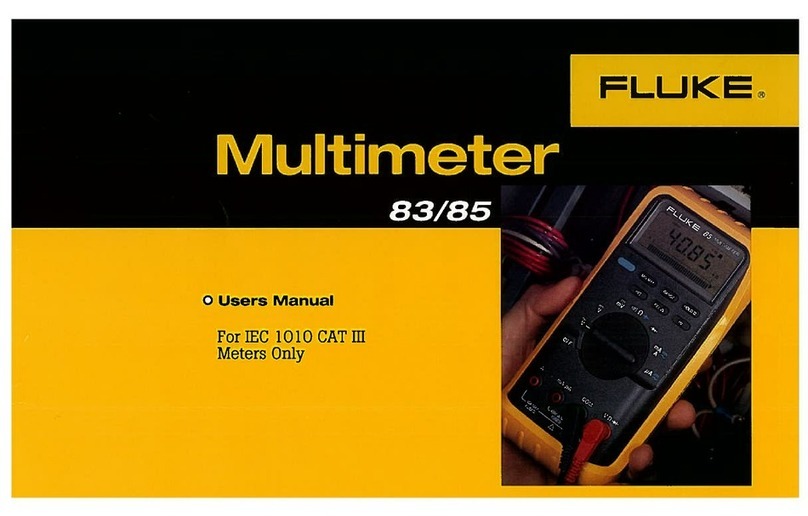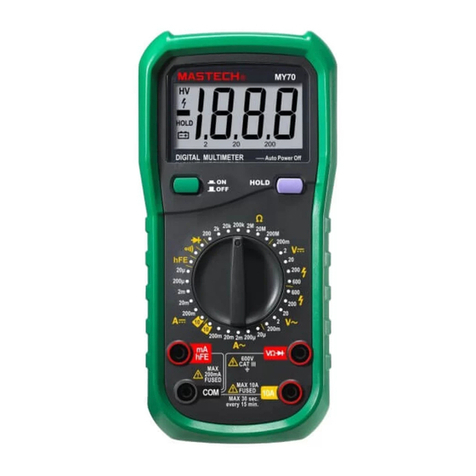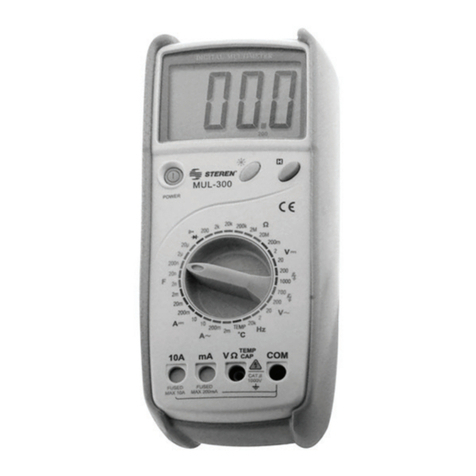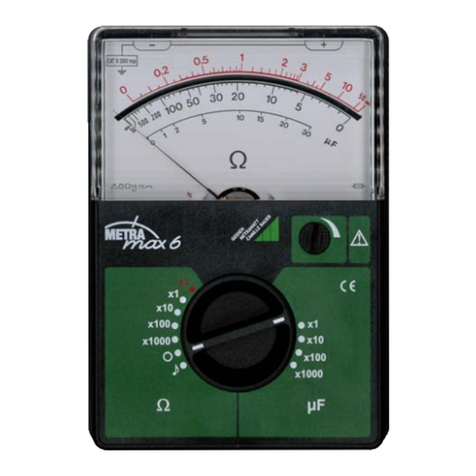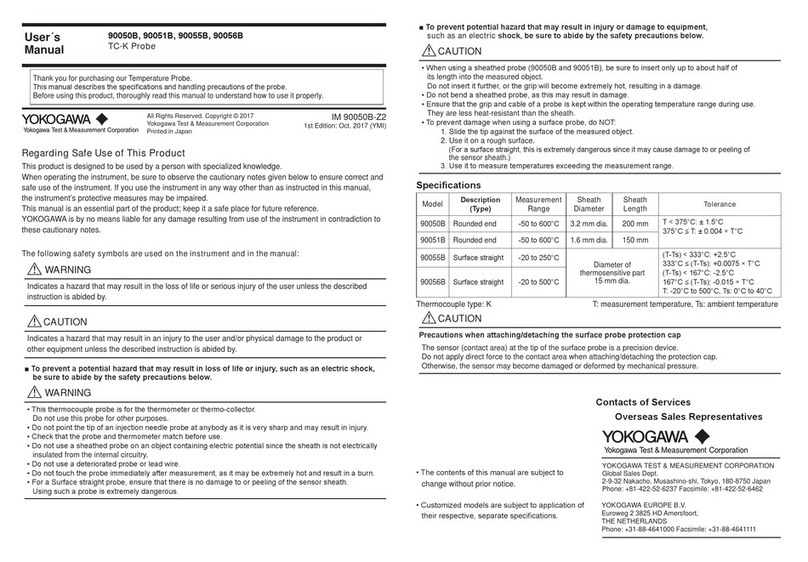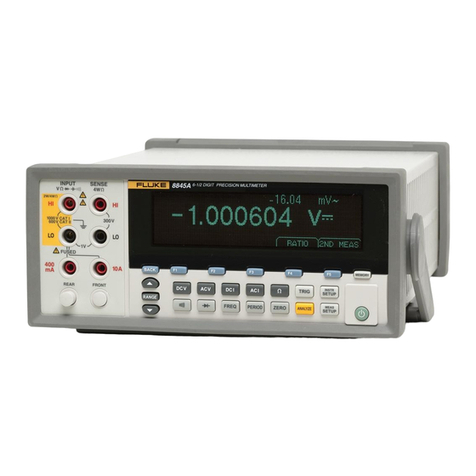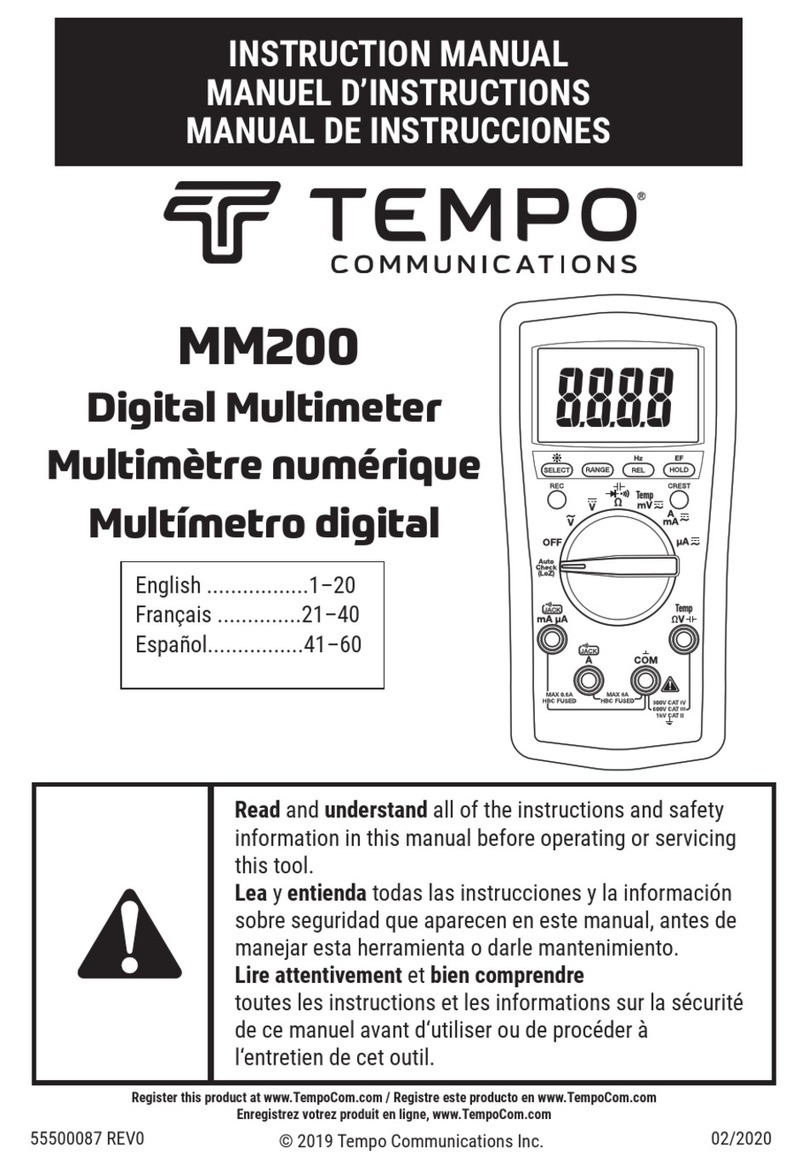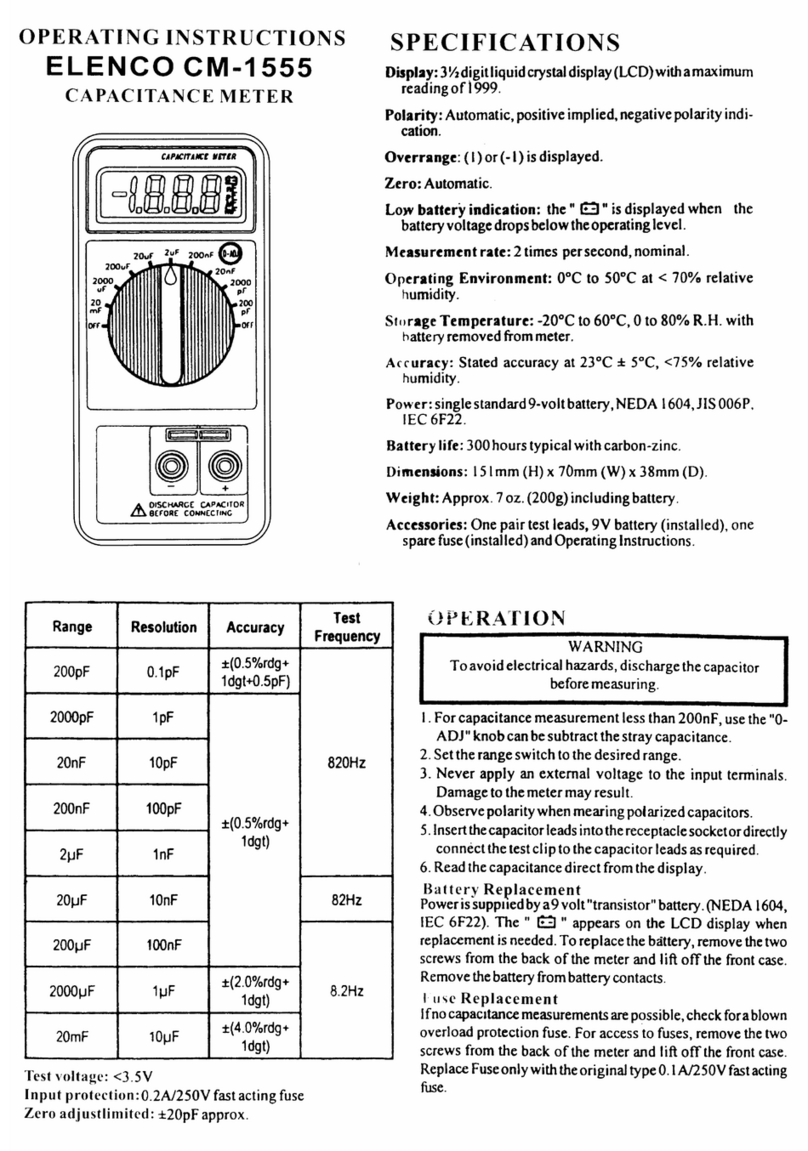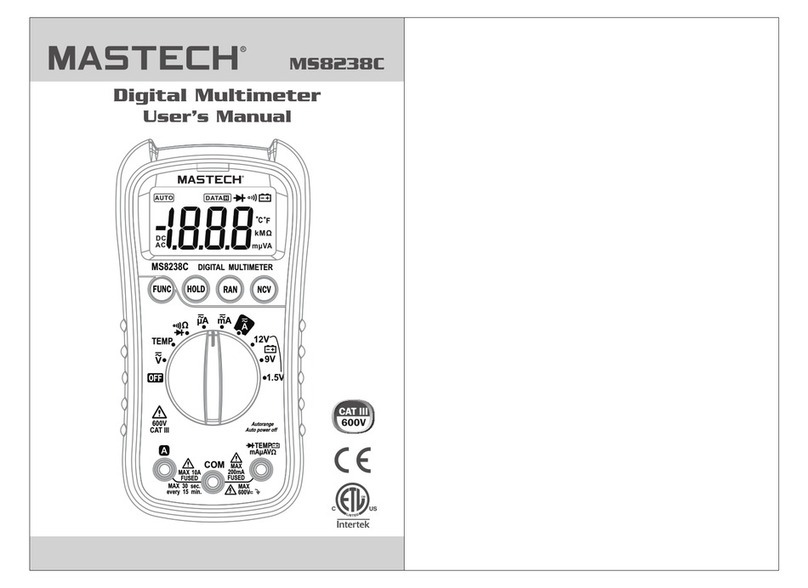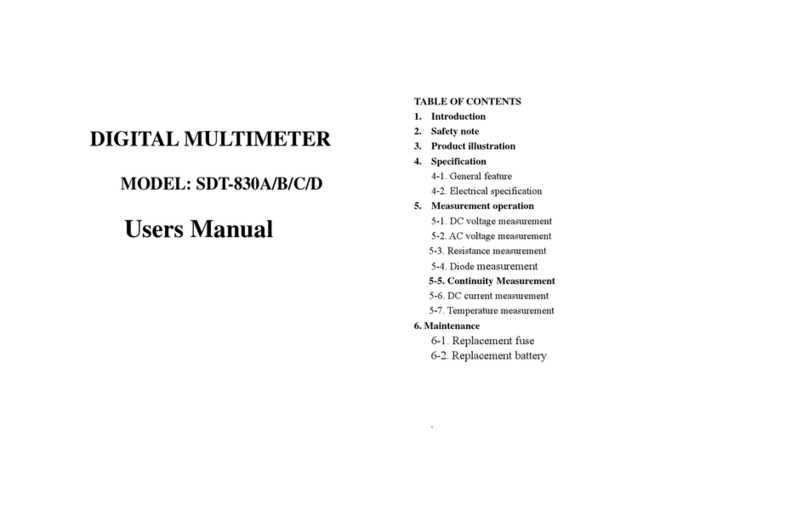
7. OPERATING INSTRUCTIONS
7-1 Attention before operation
7-1-1 Check battery. When the battery voltage drop below proper operation
range, the “ ” symbol will appear on the LCD display and the battery need to
changed.
7-1-2 Pa
attention to the “ ” besides the input
ack which shows that the
input volta
e or current should be within the specified value.
7-1-3 The ran
e switch should be positioned to desired ran
e for measurement
before operation.
7-2 Measuring DC
oltage
7-2-1 Connect the black test lead to COM
switch at the desired “V”ran
eposition.
7-2-3 Connect test leads across the source or load under measurement.
7-2-4 You can
of the red lead connection
will be indicated alon
e value.
NOTE:
1. When the value scale to be measured is unknown beforehand, set the range
selector at the highest position.
2. When onl
over-range situation and the
higher range ha
to be selected.
3. “ ” means you can’t input the voltage more than 600V, it’s possible to show
higher voltage, but it may destroy the inner circuit or pose a shock.
4. Be cautious a
ainst shock when measurin
oltage
7-3-1 Connect the black test lead to COM
switch at the desired “V”ran
eposition.
7-3-3 Connect test leads across the source or load under measurement.
7-3-4 You can
of the red lead connection
will be indicated alon
e value.
NOTE:
1. When the value scale to be measured is unknown beforehand, set the range
selector at the highest position.
2. When onl
over-range situation and the
higher range ha
to be selected.
3. “ ” means you can’t input the voltage more than 600V, it’s possible to show
higher voltage, but it may destroy the inner circuit or pose a shock.
4. Be cautious a
ainst shock when measurin
e.
7-4 Measuring DC Current
7-4-1 Connect the black test lead to COM
ack
for a maximum 200mA current , for a maximum 10A current, move the red lead
to the 10A
switch at the desired “A”ran
eposition.
7-4-3 Connect test leads in series with the load under measurement.
7-4-4 You can
of the red lead connection
will be indicated alon
with the DC current value.
NOTE:
1. When the value scale to be measured is unknown beforehand, set the ran
hest position.
2. When onl
ed, it indicates over-ran
e has to be selected.
3. “ ” means the socket mA’s maximum current is 200mA and 10A’s
maximum current is 10A, over 200m
current can be protected b
the PPTC
resettable fuse, but the 10
time should be less than 10 seconds to
prevent precision from affectin
C Current
7-5-1 Connect the black test lead to COM
ack
for a maximum 200mA current , for a maximum 10A current, move the red lead
to the 10A
switch at the desired “A”ran
e position.
7-5-3 Connect test leads in series with the load under measurement.
7-5-4 You can
of the red lead connection
will be indicated alon
with the DC current value.
NOTE:
1. When the value scale to be measured is unknown beforehand, set the ran
hest position.
2. When onl
ed, it indicates over-ran
e has to be selected.
3. “ ” means the socket mA’s maximum current is 200mA and 10A’s
maximum current is 10A, over 200m
current can be protected b
the PPTC
resettable fuse, but the 10
time should be less than 10 seconds to
prevent precision from affectin
.
7-6 Measuring Resistance
7-6-1 Connect the black test lead to COM
switch at the desired “Ω”ran
eposition.
7-6-3 Connect test leads across the resistance under measurement.
7-6-4 You can
from LCD.
NOTE: Max. input overload: 250V rms<10sec
1. When onl
ure “1” or “-1” is displa
ed, it indicates over-ran
e has to be selected.
2. For measurin
resistance above 1MΩ, the mete ma
.
3. When the input is not connected, i.e. at open circuit, the fi
ure “1” or “-1” will
be displa
e condition.
4. When checkin
in-circuit resistance, be sure the circuit under test has all
power removed and that all capacitors have been dischar
.
7-7 Measuring Capacitance
7-7-1 Connect the black test lead to COM
switch at the desired “20uF”ran
eposition.
7-7-3 Connect test leads across the capacitance under measurement.
7-7-4 You can
from LCD.
NOTE: Capacitors should be dischar
tested.
7-8 Measuring Temperature
7-8-1 Connect the black banana plu
ack and the
red banana plu
ack.
7-8-2 Set the rotary switch at the desired “ ” range position.
7-8-3 Put the sensor probe into the temperature field under measurement.
7-8-4 You can
from LCD.
NOTE:
1. The accessor
pe contact thermocouple limit
temperature is 250
, please use special probe for test
hi
her temperature.
2. Please don't chan
e the thermocouple at will, otherwise we can't
uarantee
to measure accurac
.
3. Please don’t importin
e in the temperature function.
7-9 Battery Testing
7-9-1 Connect the black test lead to COM
ack.
7-9-2 Set the rotary switch at the desired “ ”or“ ” range position to
test 1.5
.
7-9-3 Connect test leads across the source or load under measurement.
7-9-4 You can
udible continuity Testing
7-10-1 Connect the black test lead to COM
ack.
7-10-2 Set the rotary switch at the “ ” range position.
7-10-3 On diode ran
e, connect the test leads across the diode under
measurement, displa
shows the approx. forward volta
e of this diode.
7-10-4 On
e, connect the test leads to two point
of circuit, if the resistance is lower than approx. 50Ω, the buzzer sounds.
NOTE: Make sure the power is cut off and all capacitors need to be dischar
ed
under this measurement.
7-11 Non Contact
oltage detection
7-11-1 Power on the meter, on an
,themeter
enters Non Contact
n will appear on the displa
.
7-11-2 Hold the Meter so that the mater’s top is verticall
the conductor, when the live volta
ether with sound.
NOTE:
1. Even without LED indication, the volta
e detector to determine the presence of volta
ewire.
Detection operation ma
n, insulation thickness and
different t
pe and other factors.
2. When the meter input terminals presence volta
e, due to the influence of
presence volta
from electrical noise sources durin
the tests, i.e.,
florescent li
hts, motors, etc.. These sources can tri
e detection function and invalidate the test.
8. Battery replacement
1) When the battery voltage drop below proper operation range the " "
s
mbol will appear on the LCD displa
, set the selector switch to “OFF”position.
Open the cover of the batter
Close the cover of the batter
cabinet and fasten the screw.
9. Maintenance
9-1 Before attemptin
door or open the case, be sure
that test leads have been disconnected from measurement circuit top avoid
electric shock hazard.
9-2 You must replace the test leads if the lead is exposed, and should adopt
the leads with the same specifications as ori
moist fabric or small amount of deter
ent but not chemical
solution for cleanin
.
9-4 Do not use the meter before the back cover is properl
closed and screw
secured. Upon an
, stop operation immediatel
and send the
meter for maintenance.
9-5 Please take out the batter
ccessories
[1] Test Leads: electric ratin
pe thermocouple sensor probe
[3] Operator’s Manual
